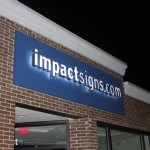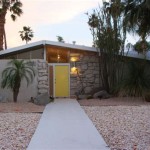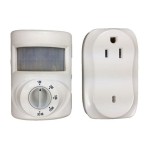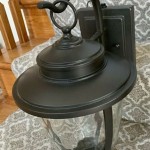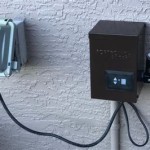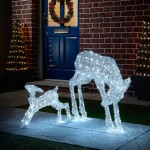Lighted Outdoor Signage: Illuminating Your Business Presence
Lighted outdoor signage serves as a critical communication tool for businesses, organizations, and institutions. It’s the visual anchor that draws attention, conveys identity, and directs potential customers or visitors to a specific location. The effectiveness of lighted signage hinges on several factors, including design, materials, lighting technology, placement, and adherence to local regulations. This article explores the different types of lighted outdoor signage, their advantages, factors influencing selection, and the importance of proper maintenance.
Outdoor signage, in its basic function, aims to create visibility. Lighted signs amplify this visibility, especially during nighttime hours and in adverse weather conditions. The illumination transforms a static marker into a dynamic beacon, enhancing brand recognition and guiding traffic. A well-designed and lit sign can significantly impact a business's bottom line by attracting more customers and reinforcing its presence within the community.
The selection of the appropriate lighted signage requires careful consideration of various elements. These include the business's brand identity, the environment where the sign will be placed, local zoning ordinances, budget constraints, and the desired aesthetic. A poorly chosen or inadequately maintained sign can detract from a business's image and negatively impact its appeal.
Types of Lighted Outdoor Signage
Lighted outdoor signage encompasses a diverse range of options, each with unique characteristics and applications. Understanding these differences is essential for selecting the most suitable solution for a particular business or organization.
Channel Letters: One of the most prevalent types of lighted signage, channel letters consist of individually crafted three-dimensional letters or shapes, typically made from aluminum or acrylic. These letters can be illuminated internally with LEDs or neon lights, creating a distinct and professional appearance. Channel letters offer versatility in terms of font style, size, and color, making them highly customizable to match a company's branding guidelines. They are commonly used for storefront signage, building identification, and directional signage.
There are several variations of channel letters. Face-lit channel letters have a translucent acrylic face through which the light shines. Halo-lit or reverse-lit channel letters have an opaque face, and the light illuminates the wall behind the letter, creating a halo effect. Combination-lit channel letters incorporate both face and halo illumination. Open-face channel letters expose the neon or LED components directly, providing a retro or industrial aesthetic.
Box Signs/Cabinet Signs: Box signs, also known as cabinet signs, are enclosed structures with a flat surface that displays the business's name, logo, and other pertinent information. The sign face is typically made of acrylic or polycarbonate and is illuminated from within using fluorescent lamps or LEDs. Box signs are relatively cost-effective and offer a simple yet effective way to display information. They are often used for smaller businesses or in situations where a more subtle signage solution is desired. Variations include single-sided and double-sided boxes, allowing for different viewing angles.
Pylon Signs: Pylon signs are large, freestanding signs supported by one or more poles or pylons. These signs are typically positioned near roadways or highways to attract attention from passing traffic. Pylon signs can incorporate various lighting techniques, including channel letters, box signs, and digital displays. Due to their size and prominence, pylon signs are often used by businesses with large properties or those seeking to establish a strong presence in a high-traffic area. They are a significant investment, requiring careful engineering and adherence to stringent building codes.
Monument Signs: Monument signs are ground-level signs that are typically constructed from durable materials such as brick, stone, or concrete. These signs are often integrated into the landscaping and architecture of the property, creating a cohesive and aesthetically pleasing appearance. Monument signs can be illuminated in various ways, including spotlighting, internal lighting of channel letters, or the integration of LED message boards. They are commonly used by businesses, schools, and residential communities to create a welcoming and professional impression.
Digital LED Signs: Also known as electronic message centers (EMCs), digital LED signs utilize an array of light-emitting diodes (LEDs) to display dynamic text, graphics, and animations. These signs offer unparalleled flexibility, allowing businesses to update their messaging in real-time. They can be used to advertise promotions, announce events, display news updates, or provide directional information. Digital LED signs are becoming increasingly popular due to their versatility and ability to capture attention. However, they also require careful consideration of content management, brightness levels, and compliance with local regulations regarding messaging and display duration.
Factors Influencing the Selection of Lighted Signage
Choosing the right lighted outdoor signage requires a strategic approach that considers a range of factors. Overlooking these factors can lead to ineffective signage that fails to achieve its intended purpose.
Branding Consistency: The chosen signage should align seamlessly with the business's overall brand identity. This includes using consistent fonts, colors, and logos. If the signage clashes with the brand aesthetic, it can create a confusing or unprofessional impression. The sign should reinforce the brand's values and personality, contributing to a cohesive and recognizable brand image.
Visibility and Legibility: The primary function of signage is to be seen and understood. Factors such as size, placement, color contrast, and font selection all contribute to visibility and legibility. The sign should be large enough to be easily read from a distance, and the colors should provide sufficient contrast between the text and the background. The font should be clear and easy to read, even at high speeds. The height and angle of the sign should be optimized for viewing from the intended audience's perspective.
Local Regulations and Permits: Most municipalities have specific regulations governing the size, placement, and illumination of outdoor signage. These regulations are often based on zoning ordinances, building codes, and aesthetic considerations. Before installing any signage, it is essential to obtain the necessary permits and ensure compliance with all applicable regulations. Failure to do so can result in fines, removal of the sign, or legal action.
Material Durability and Weather Resistance: Outdoor signage is exposed to the elements, including sunlight, rain, wind, and temperature fluctuations. The materials used in the construction of the sign should be durable, weather-resistant, and able to withstand these environmental factors. Aluminum, acrylic, and polycarbonate are commonly used materials due to their durability and resistance to corrosion and fading. The lighting components should also be designed for outdoor use and protected from moisture and extreme temperatures.
Energy Efficiency and Maintenance: The energy consumption of lighted signage can be a significant expense over time. Choosing energy-efficient lighting technologies, such as LEDs, can help to reduce operating costs and minimize environmental impact. LEDs consume significantly less energy than traditional lighting sources like neon and fluorescent lamps, and they also have a longer lifespan. Regular maintenance is also essential to ensure that the sign remains in good condition and continues to function properly. This includes cleaning the sign face, replacing burned-out bulbs, and inspecting the electrical components.
The Importance of Regular Maintenance
Lighted outdoor signage represents a significant investment, and its longevity and effectiveness are directly linked to consistent maintenance. Neglecting maintenance can lead to diminished visibility, increased energy consumption, and a negative impact on the business's image.
Cleaning and Appearance: Over time, outdoor signs accumulate dirt, dust, and grime, which can reduce their brightness and clarity. Regular cleaning is essential to maintain the sign's aesthetic appeal and ensure that it remains easily visible. The frequency of cleaning will depend on the environment, but a general guideline is to clean the sign at least twice a year. Use mild soap and water and avoid abrasive cleaners that can damage the sign face. For high signs, professional cleaning services might be required.
Lighting Component Replacement: Light bulbs or LEDs will eventually burn out and need to be replaced. Regular inspections can help to identify failing components before they completely fail. Replacing burned-out bulbs or LEDs promptly ensures that the sign remains fully illuminated and maintains its intended appearance. When replacing lighting components, use the correct type and wattage to avoid damaging the sign or creating a fire hazard. In the case of LEDs, ensure that the replacement LEDs are compatible with the existing power supply and control system.
Electrical System Inspection: The electrical system that powers the lighted signage should be inspected regularly for signs of damage or wear. This includes checking the wiring, connections, and power supply for corrosion, loose connections, or insulation damage. Any electrical problems should be addressed immediately by a qualified electrician to prevent electrical shocks or fires. Pay particular attention to signs of animal nesting or rodent damage, as this can compromise the integrity of the electrical system.
Structural Integrity: The structural integrity of the sign should also be checked periodically, particularly after severe weather events. This includes inspecting the sign’s mounting hardware, supports, and frame for signs of rust, corrosion, or damage. Any structural problems should be repaired promptly to prevent the sign from falling or becoming a hazard. For pylon and monument signs, the foundation should also be examined for settling or cracking.
Professional Maintenance Services: For complex signage systems or signs located in difficult-to-reach areas, it may be necessary to engage a professional sign maintenance company. These companies have the expertise and equipment to safely and effectively maintain and repair all types of lighted outdoor signage. They can also provide preventative maintenance services to help extend the lifespan of the sign and minimize the risk of costly repairs.
By understanding the different types of lighted outdoor signage, considering the relevant factors influencing selection, and implementing a comprehensive maintenance program, businesses can maximize the impact of their signage and enhance their overall brand image and visibility.

Exterior Lighted Signs Outdoor Business Manufacturer Is Led Sign

Exterior Outdoor Lighted Signs Impact

Outdoor Backlit Signs Metal Letter Producer Is Led Sign Factory

Exterior Outdoor Lighted Signs Impact

What Are The Diffe Types Of Lighted Signs Here Our Top 5 Dave S

Outdoor Backlit Signs Metal Letter Producer Is Led Sign Factory

Exterior Outdoor Lighted Signs Impact

Custom Led Backlit Signs Outdoor Letters Logo Signage

Backlit Signage Outdoor Halo Lit Sign Letters Maker Is Led

10 Ideas For Outdoor Lighted Business Signs Dave S
Related Posts


